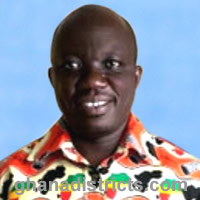Educational Facilities
There are six (6) educational circuits in the District made up of forty two (42) pre-schools, forty two (42) Primary Schools, thirty (30) Junior High Schools, two (2) Senior High Schools and one (1) Senior High and Technical Institute and one Vocational School in the district as shown in the table below.
Figure 1.7: Showing schools in the District
The data revealed that there are a total of 54 public schools representing 93.1% of the educational infrastructure in the District. This clearly shows that the public sector contributes more than the private sector as far as provision of educational infrastructure in the District is concerned. The private sector on the other hand, is lagging behind with about 20%.In addition to the information presented above, Botoku currently instituted a Community Development Technical School. Government is therefore, making the necessary arrangement to absorb (accreditation) it into the Ghana Education Service System.
The school drop- out rate for the 2014/2017 academic year is 6.6% for primary schools and 24.6% for JHS. Lack of parental care, poverty; early marriages as well as lack of awareness of value for education are the very root cause of high drop-out rate at the JHS level.
Though the participation of both sexes is high at both Primary and JHS, the dropout rate for girls is more pronounced at all levels of academic progression. Incidences ofdropout rate especially on the part of girls in the District have been attributed to several reasons including the excessive household chores undertaken by girls, the inability of parents to meet the school needs of girls,
The School Participation Rate (SPR) shows the proportion of the District’s population of the school-going age who are actually in school. In Pre- schools, the age has been pegged at between 0-5 that of Primary school is 6-11 years while it is 12-15 in JHS. The tables below show the school participation rate for the various levels.
School Infrastructure
The mere existence of schools is a key determinant of access to education. The District has 41 primary schools, 32 Junior High Schools (JHS), 41 kindergartens and 3 Senior High Schools (SHS). Most of the educational facilities (75 %) are owned and managed by the government. In terms of location, Primary schools are the most widely distributed educational facilities in the District. Some of them have very good infrastructure
However, infrastructure of some of the primary schools in the District is in a deplorable state. Some of the primary schools have 6-unit sheds and bamboo walls. Furthermore 15% of the Kindergartens are under trees and 9% are in a temporal (Borrowed) structure because of the unavailability of adequate accommodation facilities.
Teacher-Pupil Ratio
The teacher-pupil ratio is an indicator used to assess the adequacy of teachers in relation to pupils. The current teacher-pupil ratio in the public schools in the District does not completely differ from the national standard teacher pupil ratios at the primary, JHS and at the SHS levels as shown in Table.
From table 4.0 above, it has been empirically observed that one teacher is to cater for twenty five pupils at the Kindergarten level. This figure is below that of the stipulated national target of 1:30. The ratio may be due to government policy that requires the establishment of kindergarten attached to every primary school. To this end, more hands are required to effectively satisfy the overwhelming academic need of the pupils.
Analysis of the pupil-teacher ratio at the primary level shows that one teacher is to handle a class size of twenty-three. This figure differs so much from the national figure of 1:35. It may imply that almost sufficient number of teachers have been posted to the primary school therefore more Ghanaian school going age children can be enrolled into the primary school.
One teacher is to instruct twelve pupils at the JHS level shows a much deficit on enrollment, a ratio below that of the national target. This means that enough teachers might have been posted to the JHS.
The Senior High School level records a ratio of one teacher to 13 students. This is below the national target of 1:20 as shown in the table above. This might be due to the fact that most teachers come back to the classroom after completing their further studies of which number of them was posted back to the District.
These ratios in primary, JHS and SHS appear manageable and could enhance the attention given to pupils and students. This makes the classroom more conducive for learning as teachers would have ample time to address the individual academic problems of pupils and students.
Staffing
The District has a total number of 680teachers. Seventy three percent (73.4 %) of this number are trained. Most of the untrained teachers (27.9%) and (78.3%) teach at the pre-school and primary school levels respectively
School Performance Assessment Meeting (SPAM)
To help diagnose the problem of poor performance of pupils, SPAM was introduced and operational in the District. This was annually organized for the four stakeholders of education (Parents, Government, Students and Teachers) who meet to identify causes of poor performance of pupils. From the problem, solutions are recommended for effective service delivery.
BECE ANALYSIS
From figure 1.8 above, BECE pass rate for males has increased by (28% - 34.8%) 6.8% between 2013/14 and 2014/15 and increase to 48.0% but decrease to 42.0% with a difference of 6% under the year of review and that of the girls has decreased by (29.4% - 28.1%) 1.3% between 2013/14 and 2014/15 and increase to 39% and 39.5% under the year of review. The directorate could not achieve its target of 50% for males and 45% as spelt out in its Annual District Operational Plan (ADEOP). However the dramatic fall came as a result of inadequate preparation of pupils ahead of the BECE exams such as mock and pre-mock examinations and teacher’s motivation. Parents and other stakeholders are therefore encouraged to support these activities to improve future BECE performance.
Non-Formal Education
Apart from the formal education, the Ministry of Education also provides non-formal education to adults through the Non-Formal Education Division of the Ministry. The activities of the division in the district are focused on promoting functional literacy, providing civic education and in training of people in income generating activities.
Education Support
Education sector is supported by various interventions in terms of school infrastructure, furniture, teaching and learning materials. The support mainly come from the European Union (EU) , Department of International Development (DFID), USAID, GETfund , HIPC fund, VRA Resettlement Fund and the District Assembly Common Fund
Sports Development
Sports development in the district is generally low and is centered only on football promotion as a single discipline. The district does not have a stadium but rely on pitches of various schools which are less standard in the event of sporting activities.
Educational sports activities also are pronounced in the district. Apart from football, there are other disciplines which are athletics, Volley ball, etc. but these are annual events on the academic calendar. There is also the need to promote sport as part of health care promotion if the district is to achieve the heath objectives and to enhance unity among its people.
Date Created : 11/23/2017 6:23:09 AM





 facebook
facebook X (twitter)
X (twitter) Youtube
Youtube +233 593 831 280
+233 593 831 280 0800 430 430
0800 430 430 GPS: GE-231-4383
GPS: GE-231-4383 info@ghanadistricts.com
info@ghanadistricts.com Box GP1044, Accra, Ghana
Box GP1044, Accra, Ghana